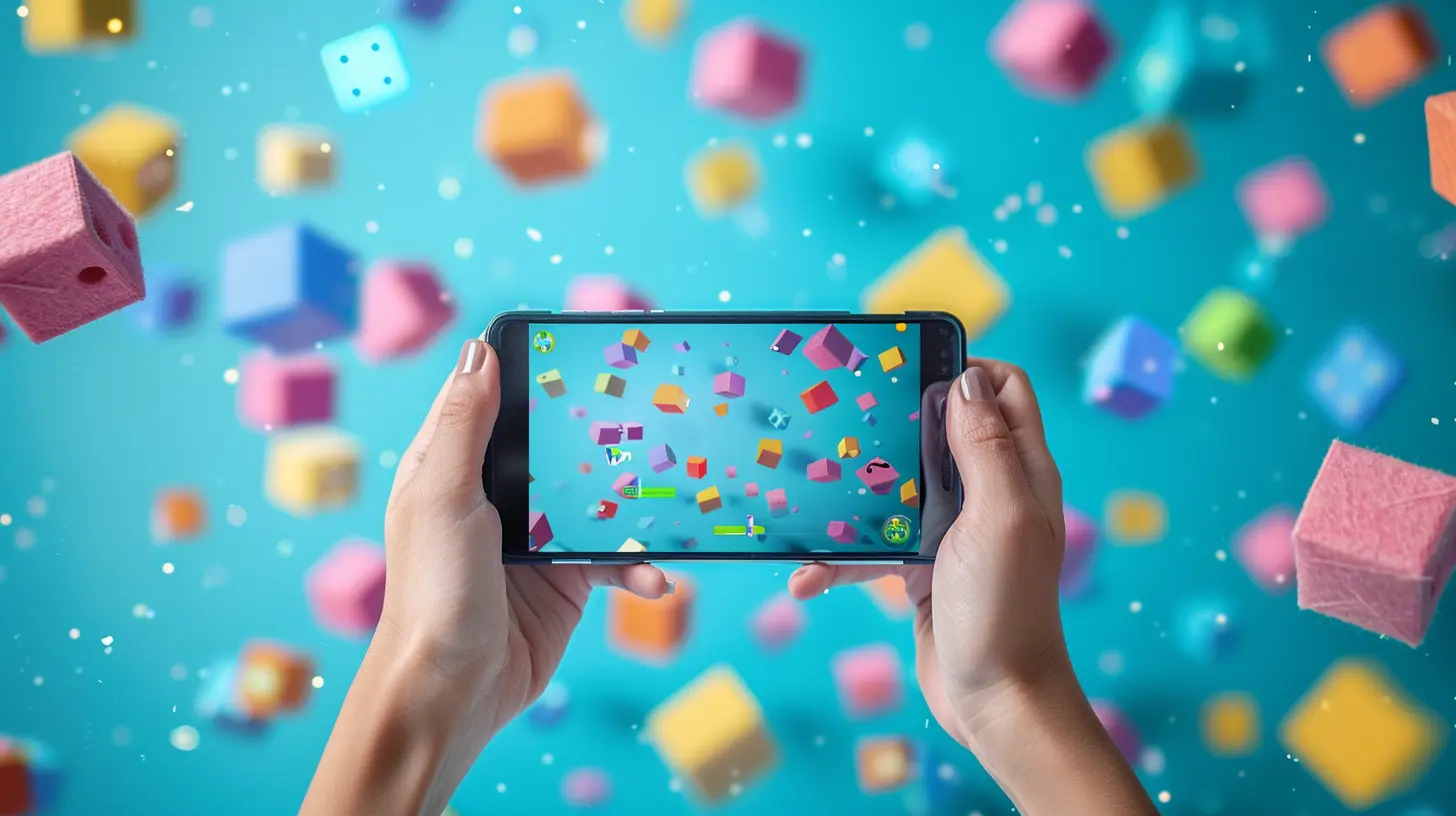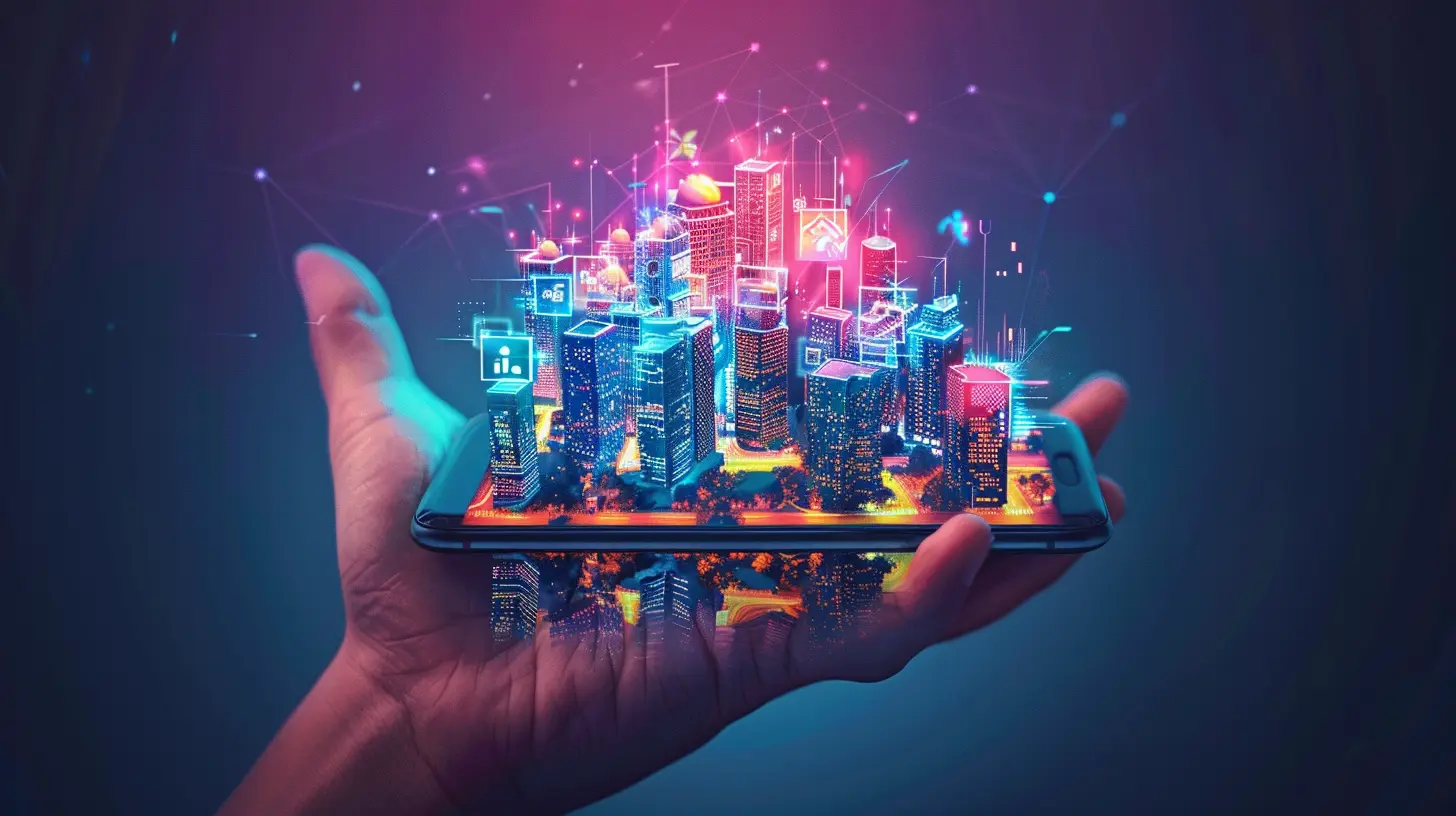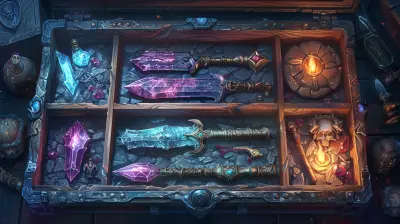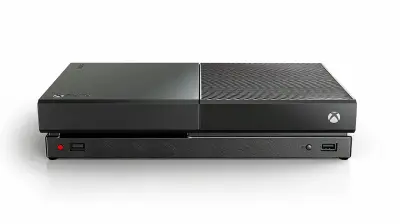The Science of Gamification in Mobile Games
11 July 2025
Gamification. Sounds like one of those buzzwords marketers throw around to sound smart, right? But hold on — it’s way more than just a fancy term. The science behind gamification, especially in mobile games, is a fascinating mix of psychology, design, and pure fun. It’s what keeps you tapping, swiping, and checking back in every few hours just to collect that daily reward.
So today, we're diving deep into this magical world — unraveling how game developers use gamification to hook players, keep them coming back, and sometimes even change their behavior without them even realizing it.
Let’s break it down, shall we?
What is Gamification, Really?
At its core, gamification is all about taking elements from games — like points, badges, levels, and leaderboards — and slapping them into non-game contexts. In mobile gaming, though, it’s evolved into an art. It's not just about throwing in a few achievements or rewards. It's about designing an experience that makes you feel achievement, progression, and, most importantly, joy.Ever played a mobile game and thought, “Okay, just one more level”? That little voice in your head? That’s gamification doing its job.
The Psychology Behind Gamification
Let’s get into your brain for a second (not in a creepy way, promise). Gamification works because it taps into the psychological triggers that drive human behavior.1. Dopamine: The Reward Chemical
Every time you unlock a new level or hit a personal best score, your brain releases dopamine — the feel-good chemical. It's like a mini celebration inside your head. That buzz you get? Totally real. And mobile games are engineered to give you these little hits again and again.Think about it: Why else would you spend 20 minutes trying to beat a level with virtual candies?
2. Motivation: Intrinsic vs. Extrinsic
Gamification plays both sides of the motivation game.- Intrinsic motivation: You play because it’s fun or challenging.
- Extrinsic motivation: You’re in it for the rewards — coins, skins, power-ups, you name it.
Good mobile games are a cocktail of both. You're enjoying the challenge (intrinsic), but you're also working toward that shiny new loot box (extrinsic).
3. The Zeigarnik Effect: The Power of the Unfinished
Here’s a fun one — we tend to remember and obsess over things we didn’t finish. Mobile game devs know this. That’s why you leave a game mid-quest and find yourself thinking about it hours later. It’s unfinished business. It bugs you until you go back and wrap things up.
Key Components of Gamification in Mobile Games
Okay, so how exactly do devs reel us in? Let’s break down the main ingredients in the gamification recipe.1. Points and Scoring Systems
Simple, but highly effective. Points give you feedback. They tell you, “Hey, you’re doing great!” or “Try harder next time!” Whether it’s experience points (XP), coins, or stars, scoring systems fuel the desire to outdo yourself — or others.2. Progress Bars and Levels
Ever notice how satisfying it is to watch a bar fill up? That’s psychological momentum. Leveling up gives you a sense of progress — a visual cue that you’re getting better. It's like climbing a ladder and seeing every rung you’ve passed.3. Badges and Achievements
Badges are little trophies that say, “You did something awesome.” They're kind of like digital Scout badges. Collecting them becomes a game in itself — especially when some are rare or hidden.4. Leaderboards
Let’s face it, we’re competitive creatures. Leaderboards tap into that. They show us how we stack up against others. You might not care — until you’re just this close to beating your buddy’s high score. Then it’s game on.5. Rewards and Loot Systems
Open a chest and get a surprise — it’s the same thrill as opening a birthday present. Randomized rewards create excitement. You never know what’s inside, and that mystery keeps you coming back for more.
Why Gamification Works So Well in Mobile Games
Short answer? Mobile devices are personal, portable, and always within reach. Combine that with the science of gamification, and you've got the perfect storm.Instant Gratification
Mobile games are built for quick hits of pleasure. A level might take 2 minutes tops. You win, you feel good, you do it again. It’s a hit-and-run happiness strategy.Social Connectivity
Most mobile games have social elements — sharing scores, inviting friends, joining guilds. Humans are social animals, and gamification uses that instinct. When your friend is ahead of you on a leaderboard, you feel that nudge to catch up.Push Notifications as Reminders
Ever get that “Hey, your energy is full — come back and play!” message? It’s not random. It’s designed to trigger your fear of missing out (FOMO) and keep you engaged.Gamification Beyond Just Fun
Sure, it keeps you playing, but gamification isn't just for entertainment. Some mobile games are using it to do some seriously amazing stuff.Fitness and Health
Think of apps like Pokémon GO or Zombies, Run! They gamify physical activity. You’re walking more, running more — and it doesn’t feel like a chore because it’s fun.Language and Brain Training Apps
Apps like Duolingo or Elevate use leveling systems, streaks, and achievements to keep you learning. You're studying, yes — but it feels like playing.Mental Well-being
Apps like SuperBetter or Happify use game mechanics to help with mental health. Completing tasks, gaining points for positive actions — it motivates real change.The Dark Side of Gamification in Mobile Games
Now hold up. Not everything about gamification is rainbows and sunshine.Addictive Design
Some mobile games push it too far. They use variable reward schedules (basically gambling mechanics) to keep you hooked. That’s where things get tricky — especially with games targeting younger audiences.Pay-to-Win Tactics
Microtransactions tied into gamification can create a “pay-to-win” culture. Suddenly, players aren’t rewarded for skill or effort, but for how much real-world money they’re willing to spend for in-game advantages.Data Manipulation
Yep, some games track how long you play, which levels you struggle with, and even when you’re most likely to make purchases — all to fine-tune the gamification methods to your habits. Creepy? A little.How Developers Use A/B Testing to Fine-Tune Gamification
Game developers are not guessing here. They constantly test different versions of levels, reward systems, and even color schemes to figure out what keeps you playing the longest.This ongoing testing helps them spot what triggers retention and what pushes players away. It's part science lab, part casino.
The Future of Gamification in Mobile Games
Gamification isn’t going away. In fact, it’s getting smarter.AI-Driven Personalization
Games are starting to tailor experiences based on your behavior. Struggling? They might ease up. Crushing it? They’ll raise the challenge. All this makes gamification feel even more personal — and effective.Integration with AR and VR
As augmented and virtual reality grow, gamification will follow. Imagine earning real-world rewards for achievements in a mixed-reality game. Mind = blown.Cross-Platform Gamification
We might soon see your progress and rewards carrying across different games or apps — creating a unified “gamified lifestyle.” You win in fitness? That could boost your progress in an RPG. Wild, right?Final Thoughts
So there you have it — the science of gamification in mobile games is a blend of psychology, design, and sneaky-smart strategies. It’s what transforms a simple app into an addictive experience. When done right, gamification makes games more fun, engaging, and even meaningful.But, as with anything powerful, it comes with responsibility; both developers and players need to be aware of where the line is between fun and manipulation.
Next time you find yourself chasing stars, unlocking levels, or battling it out on a leaderboard — just know, it’s not by accident. It’s science.
Now go ahead… play one more level. You know you want to.
all images in this post were generated using AI tools
Category:
Mobile GamesAuthor:

Leandro Banks
Discussion
rate this article
2 comments
Reese McGarvey
Fascinating insights! How does gamification actually influence player behavior and engagement in mobile games? Can't wait to learn more!
September 25, 2025 at 3:24 AM

Leandro Banks
Thank you! Gamification enhances player engagement by incorporating rewards, challenges, and social interactions, making gameplay more motivating and enjoyable. It taps into intrinsic and extrinsic motivations, driving players to stay invested in the game.
Pamela Warren
Great insights! Gamification truly enhances our gaming experiences. Thank you!
July 24, 2025 at 4:52 PM

Leandro Banks
Thank you for your kind words! I'm glad you enjoyed the article on gamification.


